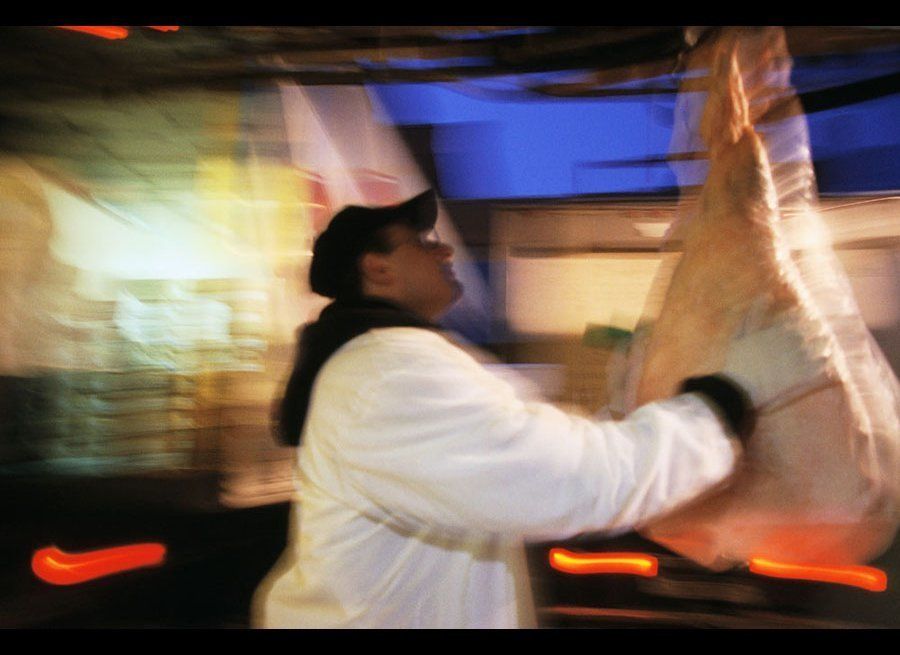A decade ago Pamela Greene decided to take a street photography class in New York City. A former journalist, screenwriter and advertising executive, she had shuttered her small agency in the late 1990s to help care for her aging parents, and sought a new avenue for her creativity. On the recommendation of her college-age daughter, Greene took her camera to the meatpacking district.
"I was told by meatpackers that I should never be there at 4am, so I figured I had to show up at 4am to see what was happening," Greene says.
What was happening was an enormous transition: A gritty neighborhood that reeked of blood and guts, populated by burly immigrant workers, prostitutes, drug addicts and transvestites, was rapidly transforming into one of chic designer boutiques, fabulous restaurants, glitzy hotels and nightclubs -- and inevitably, tourists in stilettos who watched "Sex and the City."
"When you walked along the street you could see tremendous changes taking place; the meatpackers said it was only a matter of time," she says.
Greene's class assignment turned into an eight-year odyssey. From 2002 to 2010 she made a bi-weekly trek from her suburban New Jersey home to lower Manhattan to shoot the denizens of the district and the gentrification of their urban space. She took thousands of images, and chose 125 for her book Blood and Beauty: Manhattan's Meatpacking District, recently published by Schiffer. (Story continues below slideshow.)
Arriving around 2am, Greene would grab a cup of coffee at Hector's Cafe, the neighborhood mainstay, before heading out to photograph the denizens of the district. "They turned out to be the most welcoming audience I've ever had," she says of the meatpackers, many of them immigrants. "They were very proud of their work, and delighted that I was looking a little deeper. This was a place where people got a start in this country, who were young and hungry and had no other skills."
Greene also interviewed and photographed the immigrants from Europe and South America who launched restaurants and designer boutiques in the neighborhood. Florent Morellet, for example, opened Florent in August 1985, a grungy French bistro with a long Formica counter, populated by artists and drag queens, celebrities and designers, and New Yorkers looking for a bite after a night of clubbing.
"Diversity was what made it really exciting," says Greene. "Florent was fun the whole time no matter how glossy the neighborhood became, because it was still a place that everybody, no matter what their lifestyle, could come and have a burger."
Florent paved the way for the neighborhood's new identity, and the glitzy Soho House, a private membership club, opened nearby, followed by the Gansevoort Hotel and upscale restaurants Vento and Buddakan. Florent closed in spring 2008, after its rent rose by $30,000 a month.
"The closing of Florent was very bitter," Greene says. "I and many, many people had a tremendous sense of sadness as the neighborhood changed. But the people who were coming in were really excited. It's a different workforce. The people who own the salons, the designers, the restaurant workers - they work incredibly hard.
"You can be sad because it's changed - people always say the past was better - it's because you were younger then," she adds. "But the people who replaced you are just as vibrant as you were then. It's really a story about New York; New York was made for change and made by change."
And while the neighborhood changed, so did Greene, who found her second act. "I took to street photography like fat to a frying pan and it became my life," she says. "I didn't know where I was going when I started, but I went through a transition to becoming an utterly committed photographer as a way of life."
